From the TC 372 Workshop Compendium
Taking the internet seriously
Film works are not only of interest because of their immediate content, but also for creative works that have been used in, or derived from them.
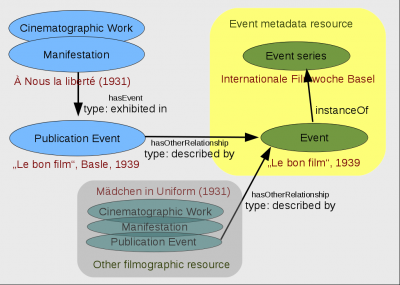
|
Taking the idea of events as connectors a bit further, we could envision a resource that allows us to uniquely identify events. Such a resource would resemble what librarians call an authority file.
Using a publicly available identifier for the Basel film festival would allow machines to find other resources referring to this event. This could be other films shown at the festival, posters like the one seen in the previous session, or any other materials such as press articles or photographs.
|
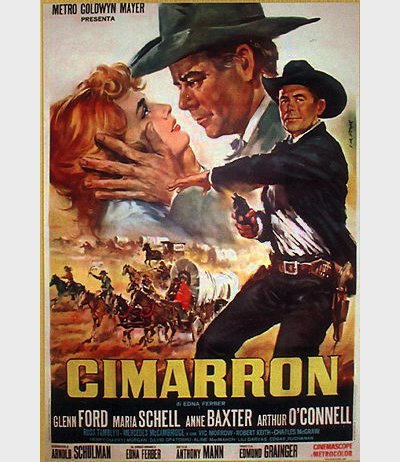
From: http://en.wikipedia.org/wiki/File:Cimarron1960.jpg
|
Though this is yet another poster, we will now look at a different relationship.
For this film from 1960, MGM commissioned composer Franz Waxman with creating the music. Waxman, a German emigré also known under his former name Franz Wachsmann, composed the score as one of the last works before his death in 1967.
|
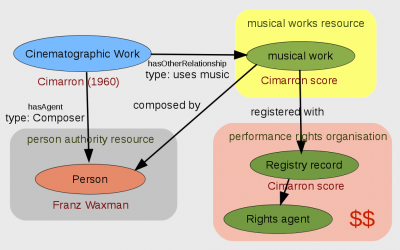
|
Assuming that we have a resource type for musical works associated with our filmographic records, then we can use the music description to include further references.
In this case, we include a reference to a record from a performing rights organisation as an aid to users doing rights research.
|
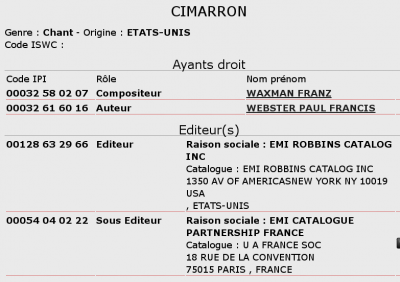
from: http://www.sacem.fr/oeuvres/oeuvre/rechercheOeuvre.do
|
This is what we would get if our musical works record for the Cimarron title song had a link to the French SACEM database. SACEM is the French performing rights organisation collecting royalties for musicians and rights holders.
|
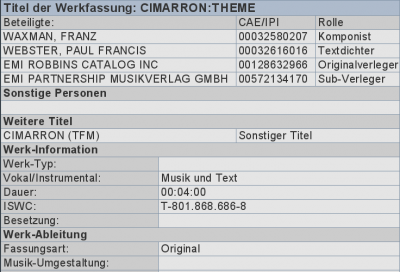
from: https://online.gema.de/werke/
|
... and this is what a link to GEMA, the German performance rights organisation, would produce.
Note that authors, composers, arrangers, as well as publishers or agents are identified by an IPI (Interested Party Identifier) number. Adding this number to a person authory record can also facilitate rights research.
|




